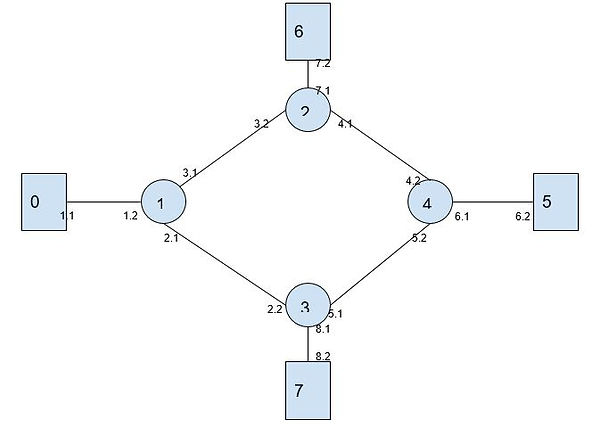Improving latency for high priority data using QOSPF - a QoS extension to OSPF protocol
In this section, we will focus on how QOSPF based routing is different from the normal routing process and how it helps in providing a faster service to the higher quality of service packets.
In the base case, irrespective of the class that the traffic belongs to, entire traffic is routed through the network via same path from a given source host to a destination host.
On implementing the QOSPF algorithm as proposed in this project, the QoS routes are routed via the least congested paths.
This helps in giving the higher quality of service traffic faster transport through the network.
The above mentioned distinction is evident from the following observations made during the implementation of this project:
Scenario :
FTP data is sent from 192.168.6.2. to 192.168.1.1.
Iperf started from 192.168.7.2 to 192.168.8.2.
Topology used:
Base Case:
It was seen that the FTP traffic even though it was being sent as QoS 1 was being sent through the route congested by the iperf traffic.
When the Congestion reporter module was turned on, every router in the network was congnizant of the congested paths. Due to this the routes for the QoS 1 packets were changed thus giving them a differentiated service.
This can be seen from the figure below that shows that the FTP -Data packets are routed through different path from node 4.
For the base case, the time taken was 150 seconds to transfer a video file as FTP data.
On implementing the QOSPF routing, the time taken by the same file was reduced to 25 seconds.[1]
Lahari.. add screenshot of 25 seconds.





